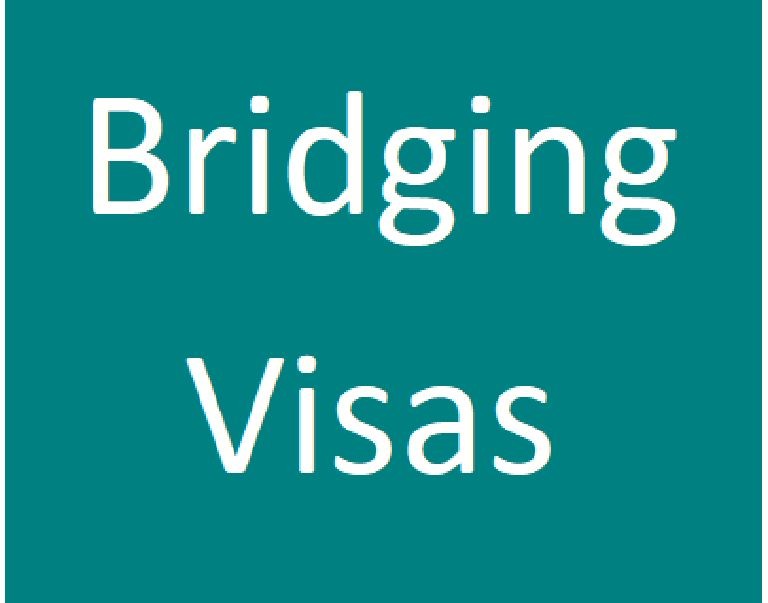The right visa is one of the most crucial requirements for studying in Australia. The most common application of an Australian bridging visa is to "bridge" the gap between an existing visa and the one you are applying for. However, it may be used for a variety of other purposes as well. In other words, while you wait for a substantive visa to be processed, you will be able to stay in Australia lawfully thanks to this temporary visa.
Your ability to stay in a foreign country is contingent upon having a visa. Regardless of how long you've lived somewhere or if you had a valid visa up until recently, it's illegal to stay there without a valid visa. If you don't have a valid visa, the government of Australia has the right to hold you, send you back, and charge you the expense of doing so. You would only have one choice left: get out of the nation as quickly as possible. Of course, there are consequences.There is a potential that you won't be issued a visa for up to 3 years if you leave Australia without a valid visa. You must thus be aware of your obligations, rights, and legal standing in the nation. Be aware of the deadlines for applying for and receiving visas. This will assist you in making the proper preparations and applications in advance so that you never run the danger of not having a valid visa. When your previous visa is about to expire or has already expired and the one you have requested for has not yet been approved, a bridging visa might assist you get through this period. You can also require a bridging visa for other factors. For instance, if you are intending to leave Australia but are presently residing there illegally, or if you are waiting for the outcome of a court case over an appeal on your visa.
Types of Bridging Visas
There are six main types of bridging visas, each of which comes with a unique set of rights and obligations. Frequently, the sort of Bridging Visa you will have depends on the circumstances of your movement during the period before you are given one.
1.Bridging Visa a (Bva):
When a person applies for a visa while already in Australia and while they have a valid visa, they are given the Bridging Visa A (BVA). The Bridging Visa A enables the bearer to stay in Australia after their substantive visa expires while they wait for a decision on the replacement one. It allows the holder to go anywhere in Australia, but they cannot leave the country and then come back. Based on the substantive visa they previously held, the bearer of this visa is granted the right to work and study. For instance, if you were in Australia and had a Student Visa at the time you filed for a different substantive visa, you would be given the same employment and study restrictions on a Bridging Visa A as you would have had on your Student Visa.
2.Bridging Visa B (Bvb):
The bearer of a Bridging Visa B (BVB) has the freedom to travel. You have authorization to leave Australia and return as long as you do so within the time frame specified on the grant notice since it comes with a "travel authority" and "travel period."The Bridging Visa B allows you to live, work, and study in Australia after the travel time is up and you've returned, but it does not allow you to leave and then reenter. To be able to apply for a Bridging Visa B, a person must already have a Bridging Visa A or B.
3.Bridging Visa C (Bvc):
A person who willingly submits an application for a substantive visa after their substantive visa has expired while they are in Australia illegally is eligible for a Bridging Visa C (BVC). A person with a Bridging Visa C is not permitted to leave Australia and return. If someone is given this visa with a restriction that prevents them from working, they can apply for a new Bridging Visa C that does not include the work restriction. In order to be successful with their application, individuals must show that they have a strong need for employment. In order to do this, it is frequently necessary to provide evidence that the person would suffer financially if they were unable to work lawfully.
4.Bridging Visa D (Bvd):
A person who is about to become ineligible and has sought to submit a substantive visa application but the application was rejected may be awarded a bridging (prospective applicant) visa. A person in this situation can apply for a Bridging Visa D, which will give them up to five days to submit a legitimate application. The right to work or the ability to leave and return from Australia are not included with bridging (prospective applicant) visas. You must be an illegal alien or someone who will become one within three business days of applying for a bridging visa in order to qualify for one.
5.Bridging Visa E (Bve):
Non-citizens are typically awarded Bridging Visas E or BVE to enable them to stay in Australia legally. They are often provided after a person has been identified as being illegal in order to give them time to leave Australia willingly. This often happens after a decision has been made to terminate a visa under section 116 of the Migration Act of 1958. Bridging Visas E are also issued as a means of staying in Australia while you submit an application for a substantive visa, await the outcome of an appeals court hearing, or wait for Ministerial Intervention to grant you a visa. Additionally, they are given to those who have submitted a protection visa application.The requirements for a Bridging Visa E are quite high. The holder is often required to submit periodic reports to a Department of Home Affairs office as part of their reporting requirements. 'No job' and 'No study' restrictions are also included with the visa. These restrictions can be lifted by applying for a new visa and submitting documents justifying why employment or study authorization should be granted.
6.Bridging Visa F (Bvf):
In connection with severe Commonwealth offences including trafficking, sexual slavery, or misleading recruiting, police in Australia may award a Bridging Visa F to a person of interest. Until the earliest date indicated by the Minister, the bearer of this visa may stay in Australia. In most cases, this period lasts for 30 days after the award or until the Minister notifies the recipient that they are no longer a person of interest to the police. A "no work" restriction is put in place.
Eligibility for Bridging Visa
Following are the specifics;
1.Applicant’s Location:
- At the time of application, the applicant must be physically present inside Australia's boundaries. It is not possible to apply for this visa from locations outside of Australia's national boundaries. Furthermore, if the applicant chooses to leave the country, this visa cannot grant him or her the right to come back.
- The application must be submitted in accordance with the deadline, which is postponed for two distinct governing bodies. For the Administrative Appeals Tribunal, submitting a request for review within the required timeframe suffices; further applications or bridging visas are not required. However, if a judicial review is requested, the applicant must submit their application within 35 days of the day the panel issued its decision. The eligibility for a subsequent bridging visa may be revoked if this is not done.
- To apply for this visa, you can be of any age. Regarding this visa, there are no specified age restrictions.
- The candidate must currently have or have held a valid visa. Only when a substantive visa has been sought for further and a decision is pending, or when the legal process associated with an appeal to the judicial review authority about an application has not yet been fully resolved, can a bridging visa be granted.
- The applicant must adhere to the requirements of the character and health standards established by the immigration ministry.
- At the time of application, you must produce documentation proving your residence in Australia.
- You must supply the necessary information about your financial situation in order to be granted permission to work while the decision is being published.
Bridging Visa Process Time
Depending on the application form and the kind of visa requested, the bridging visa class a will vary. In order to identify and complete an error-free submission when attempting to apply for visa subclass 010, the applicant can use the services of a knowledgeable Immigration Agent Australia and receive a positive response on the first try. The process should take no longer than 28 days to complete.







.jpg-48800.jpg)

